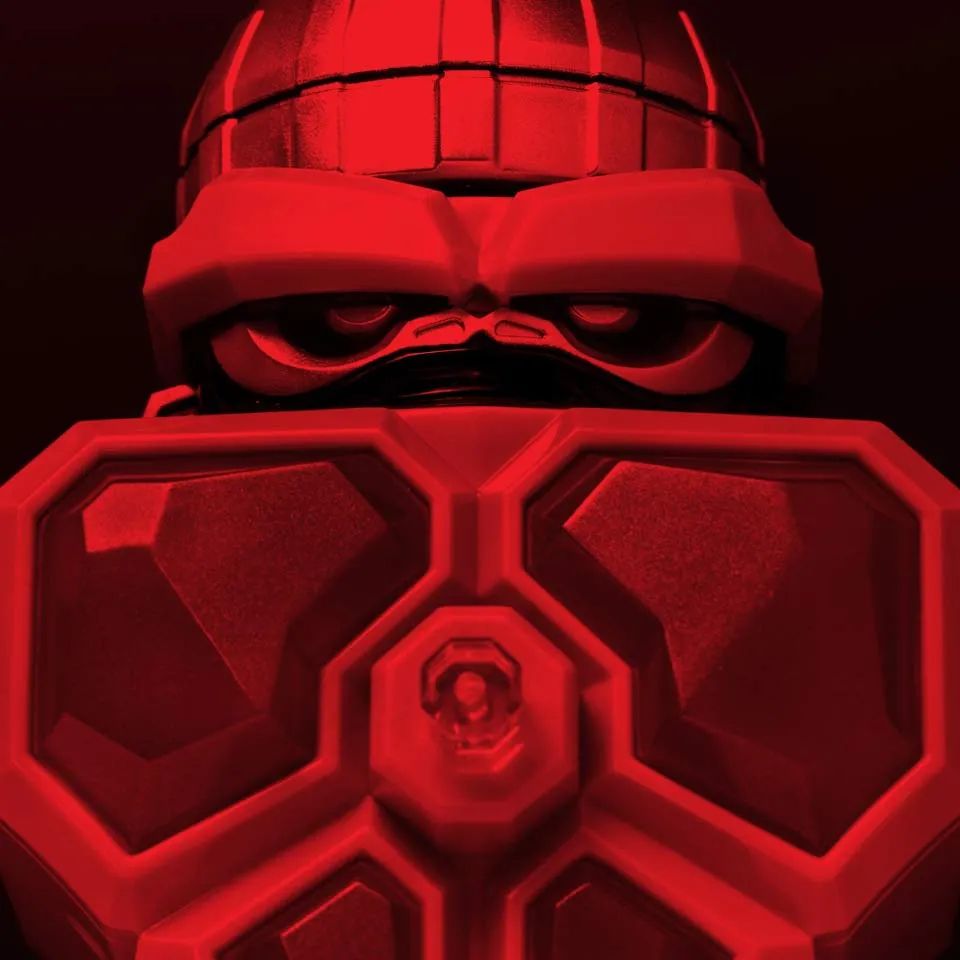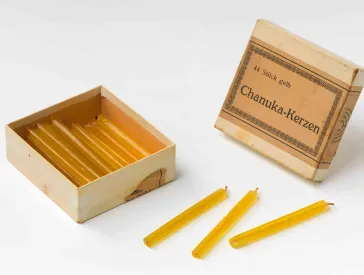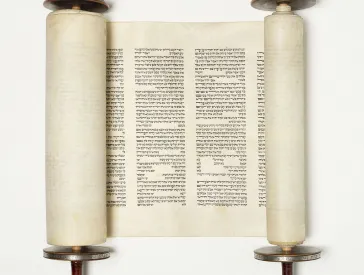Golem, Language, Dada
Article in the Exhibition Catalogue GOLEM
Emily D. Bilski
Medieval Jewish mystics are said to have worked in unison in order to make a golem, an act mirrored in the collaboration between Mark Berghash, Rimma Gerlovina and Valeriy Gerlovin. Combining elements of photography, concrete poetry, performance and body art, the artists created a life-sized golem, each depicting a section of the human body adorned with painted Hebrew letters. Arranged in a grid like a Hebrew crossword puzzle or Scrabble board, the possible “readings” offered by this composition constitute a witty, multilingual play of words and meanings.
Reading horizontally from right to left across the middle grid, we have the Hebrew word emet (אמת)—“truth”—one of the combinations of letters said to animate a golem. The two letters painted on the figure’s hand spell met (מת)—“death”—the specific combinations of letters that will render a golem lifeless, the word’s meaning accentuated by the blood-red color. Once we start to read the letters along the vertical axis of the grid, the possibilities multiply. Beginning with the large black aleph (א) emblazoned on the chest and combining it with the two letters on the figure’s ankle (דם) we get adam (אדם), “man.” But the second syllable of that word—dam (דם)—is the word for “blood” in Hebrew, its meaning also highlighted by the use of red. However, we could read this same combination of letters as dame, the French word for “woman.” If we include the letter mem (מ), which is painted on the figure’s head in sounding out the letters, we get “Madame.”
The gender-bending wordplay is consistent with the mixing of male and female anatomies in the figure itself, which boasts a dainty female head perched atop a hairy male chest. Constructed from parts taken from different bodies, the figure calls to mind one of the golem’s most famous relatives, Frankenstein’s monster, though this golem is decidedly more beautiful. The discrepancies in scale and gender give the figure the appearance of having been created by exquisite corpse, a game (from the French cadavre exquis) favored by Dadaists and Surrealists as a collaborative method for creating a composition, the goal of which was to transcend rationality. We, as viewers, join the collaboration, for in deciphering the combination of letters, we help this particular golem come to life.
Golem II Rimma Gerlovina, Mark Berghash, Valeriy Gerlovin, USA, 1987 Chromogenic color prints mounted on aluminum 182.9 x 121.9 x 5.1 cm Photo: Gerlovina, Berghash, Gerlovin, 1987/The Jewish Museum, New York
Citation recommendation:
Emily D. Bilski (2016), Golem, Language, Dada. Article in the Exhibition Catalogue GOLEM.
URL: www.jmberlin.de/en/node/4686

Online Edition of the GOLEM Catalog: Table of Contents
The Golem in Berlin: Introduction by Peter Schäfer
Chapter 1
- The Golem Lives On: Introduction by Martina Lüdicke
- My Light is Your Life: Text by Anna Dorothea Ludewig
- Avatars: Text by Louisa Hall
- The Secret of the Cyborgs: Text by Caspar Battegay
Chapter 2
- Jewish Mysticism: Introduction by Emily D. Bilski
- Golem Magic: Text by Martina Lüdicke
- Current page: Golem, Language, Dada: Text by Emily D. Bilski
Chapter 3
- Transformation: Introduction by Emily D. Bilski
- Jana Sterbak’s Golem: Objects as Sensations: Text by Rita Kersting
- Crisálidas (Chrysalises): Text by Jorge Gil
- Rituals: Text by Christopher Lyon
- A Golem that Ended Well: Text by Emily D. Bilski
- On the Golem: Text by David Musgrave
- Louise Fishman’s Paint Golem: Text by Emily D. Bilski
Chapter 4
- Legendary Prague: Introduction by Martina Lüdicke
- Golem Variations: Text by Peter Schäfer
- Rabbi Loew’s Well-Deserved Bath: Text by Harold Gabriel Weisz Carrington
Chapter 5
- Horror and Magic: Introduction by Martina Lüdicke
- Golem and a Little Girl: Text by Helene Wecker
- The Golem with a Group of Children Dancing: Text by Karin Harrasser
- Bringing the Film Set To Life: Text by Anna-Carolin Augustin
- Golem and Mirjam: Text by Cathy S. Gelbin
Chapter 6
- Out of Control: Introduction by Emily D. Bilski
- Golem—Man Awakened with Glowing Hammer: Text by Arno Pařík
- Dangerous Symbols: Text by Charlotta Kotik
- Be Careful What You Wish For: Text by Marc Estrin
Chapter 7
- Doppelgänger: Introduction by Martina Lüdicke
- From the Golem-Talmud: Text by Joshua Cohen
- Kitaj’s Art Golem: Text by Tracy Bartley
- The Golem as Techno-Imagination?: Text by Cosima Wagner
See also
- GOLEM: 2016, online edition with selected texts of the exhibition catalog
- GOLEM: 2016, complete printed edition of the exhibition catalog, in German
- Golem. From Mysticism to Minecraft: Online Feature, 2016
- GOLEM: Exhibition, 23 Sep 2016 to 29 Jan 2017

